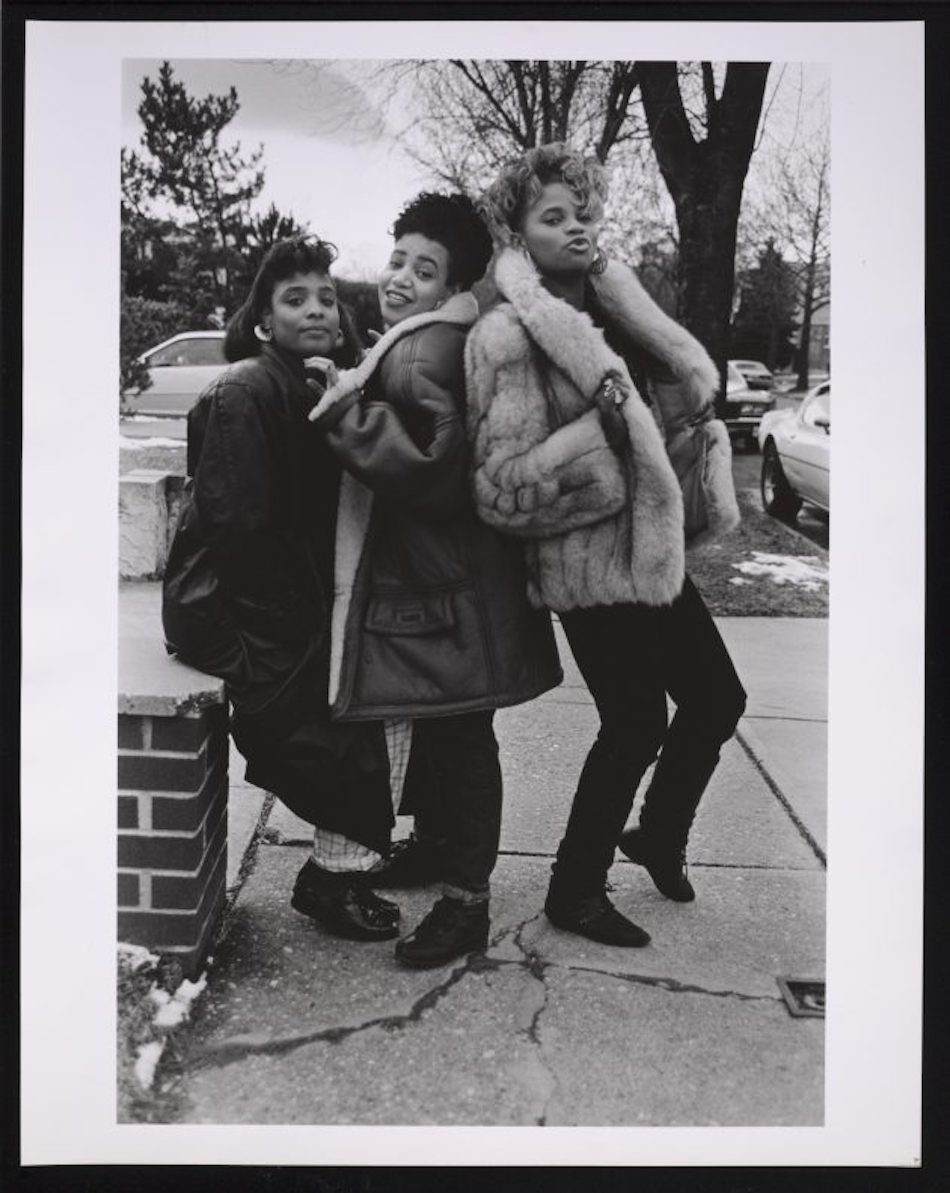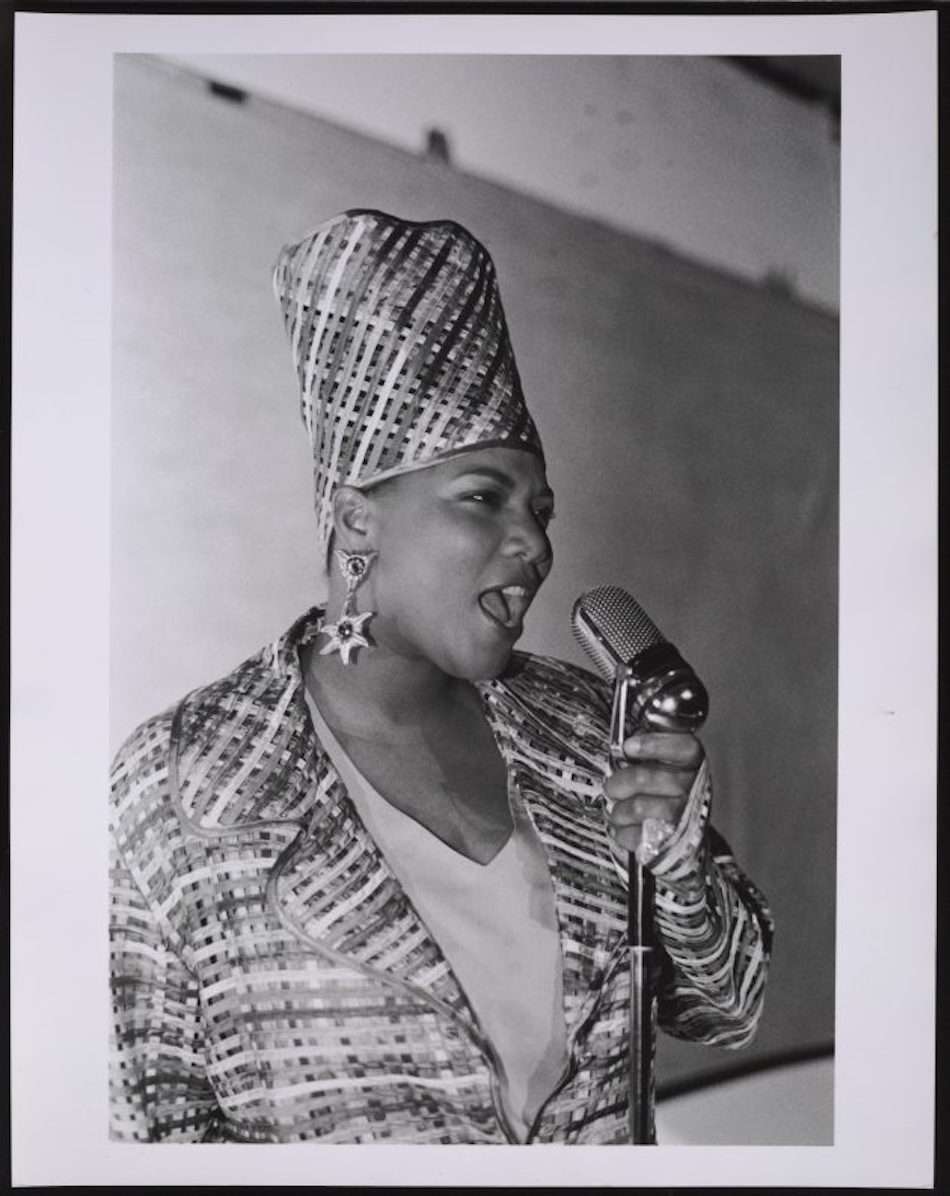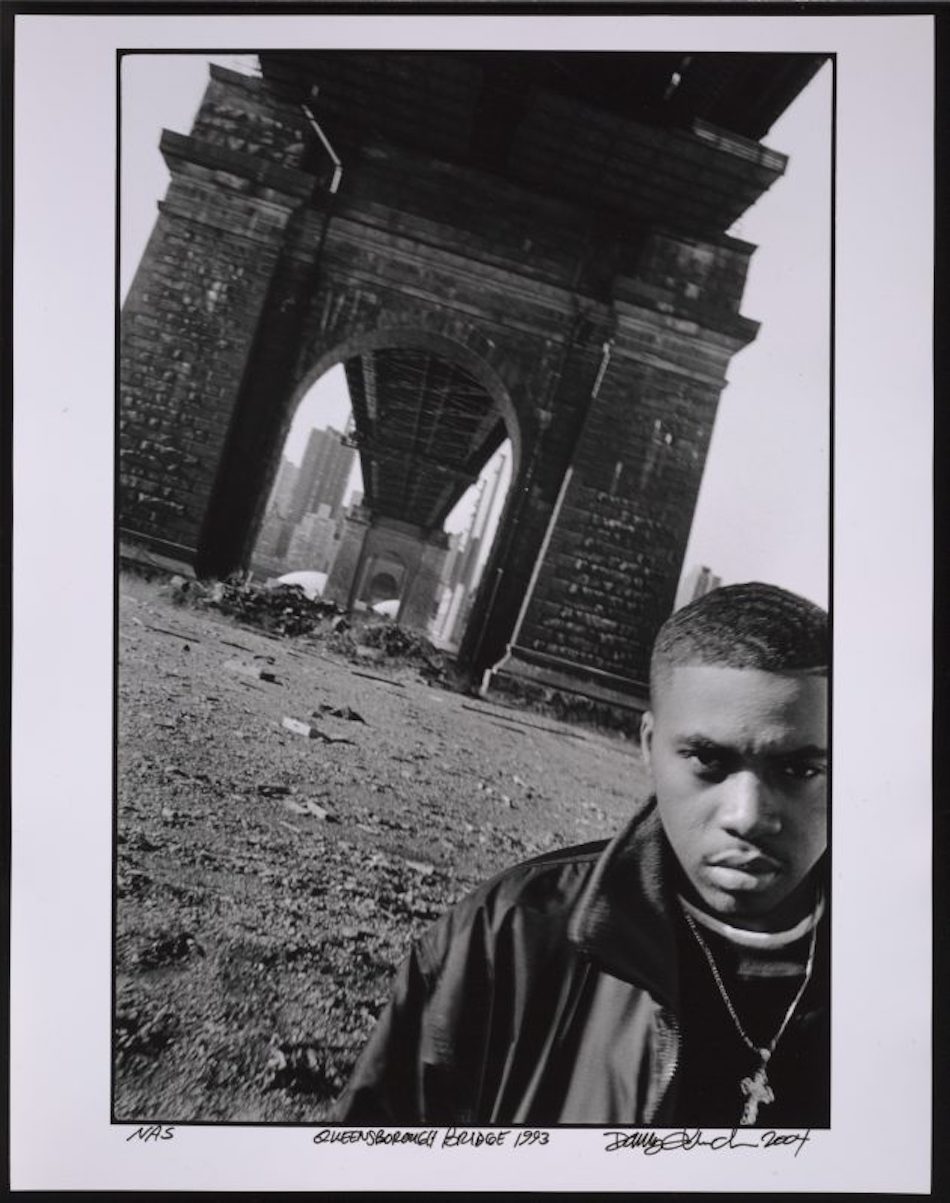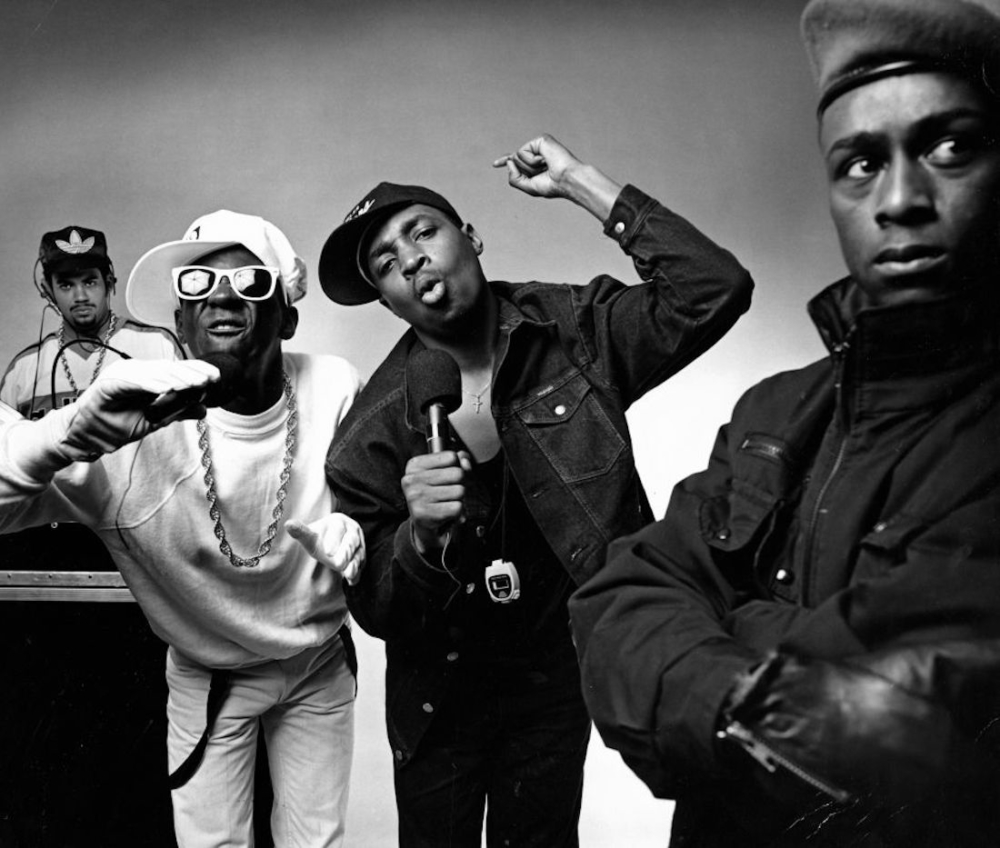In the late 1970s, hip-hop burst onto the scene in the Bronx in a cultural explosion of rapping, breakdancing and beatboxing, but it didn’t happen in a vacuum.
Hip-hop built on traditions developed over decades by African-American musicians, dancers and artists. An engaging photo exhibition at the Smithsonian’s National Museum of African American History and Culture explores those ties through the pairing of photos of hip-hop pioneers with their predecessors.
 Salt-N-Pepa outside Bayside Studios on Feb. 6, 1989. Al Pereira. (Image courtesy Smithsonian’s National Museum of African American History and Culture)
Salt-N-Pepa outside Bayside Studios on Feb. 6, 1989. Al Pereira. (Image courtesy Smithsonian’s National Museum of African American History and Culture) Queen Latifah on the set of the “Fly Girl” video on June 23, 1991. Al Pereira. (Image courtesy Smithsonian’s National Museum of African American History and Culture)
Queen Latifah on the set of the “Fly Girl” video on June 23, 1991. Al Pereira. (Image courtesy Smithsonian’s National Museum of African American History and Culture) Nas under the Queensborough Bridge in 1993. Danny Clinch. (Collection of the Smithsonian’s National Museum of African American History and Culture, Courtesy of Sony Music Entertainment)
Nas under the Queensborough Bridge in 1993. Danny Clinch. (Collection of the Smithsonian’s National Museum of African American History and Culture, Courtesy of Sony Music Entertainment)“It shows how hip-hop went from a Bronx-based cultural expression to a global billion-dollar industry,” says Rhea L. Combs, the museum’s curator of photography and film.
“Represent: Hip Hop Photography” explores four themes of how identity, creativity, activism and community influenced elements of hip-hop, including DJs, MCs, break-dancers, and graffiti artists.

